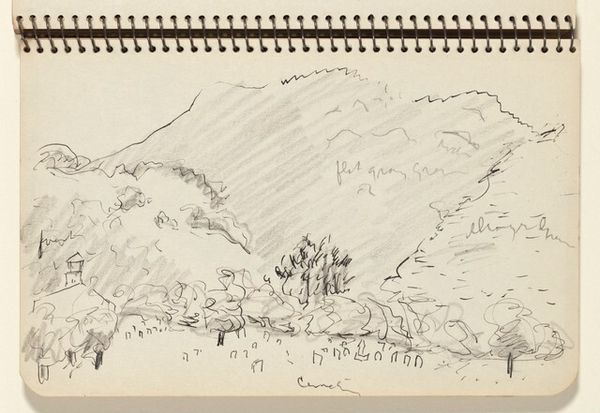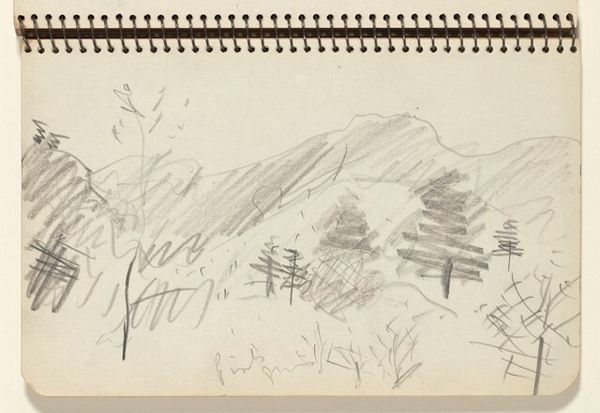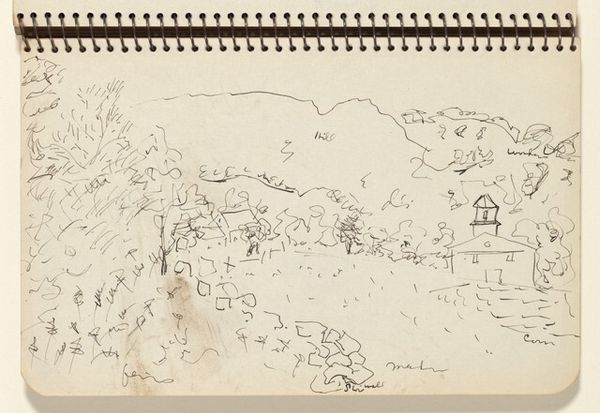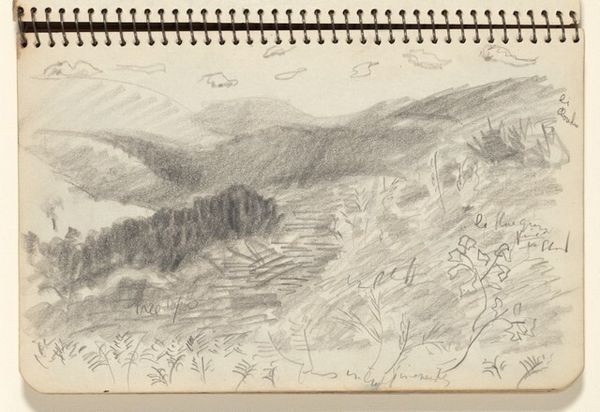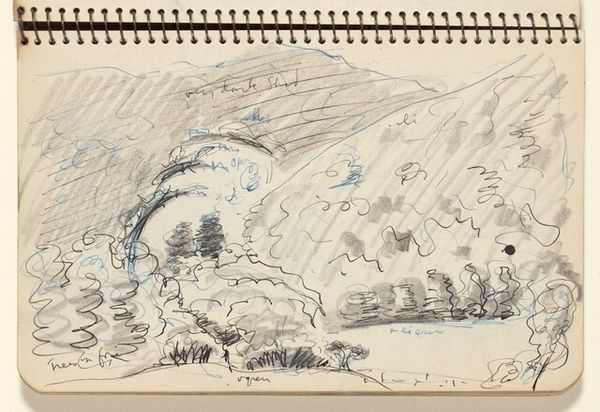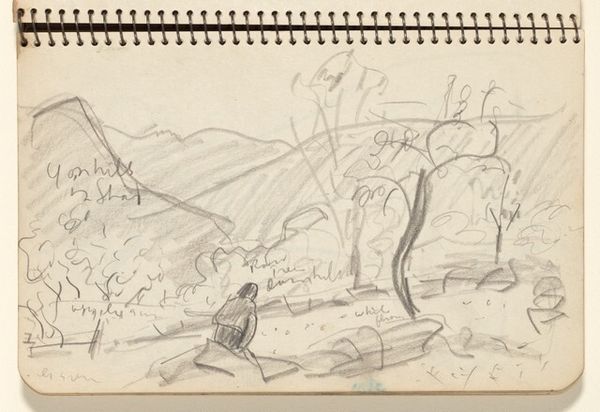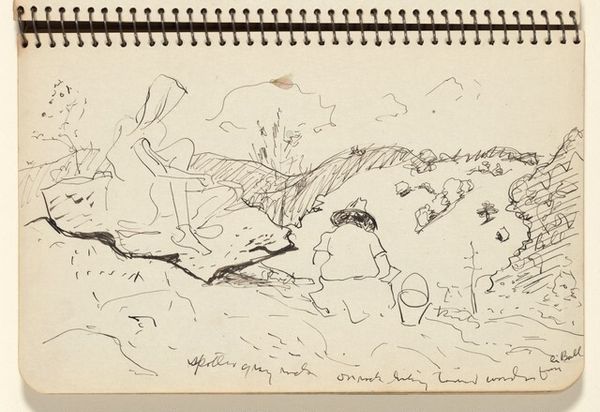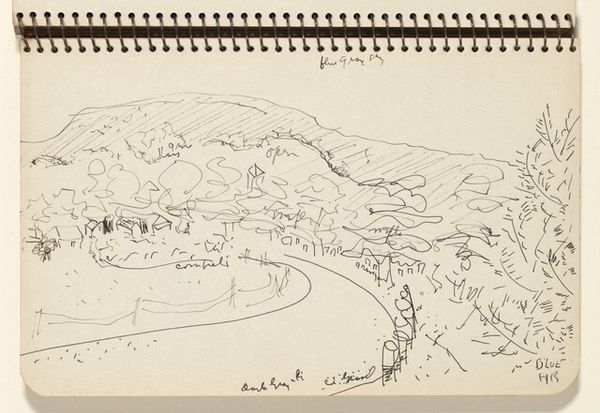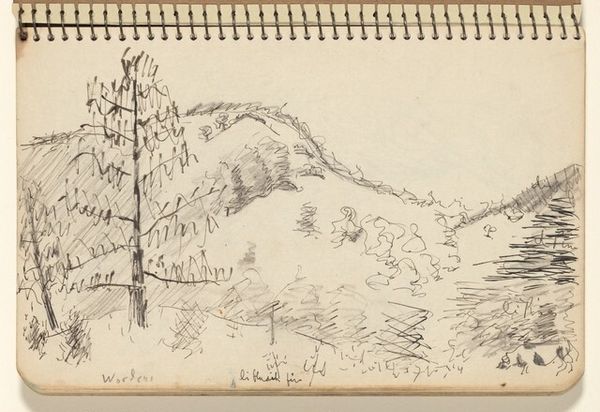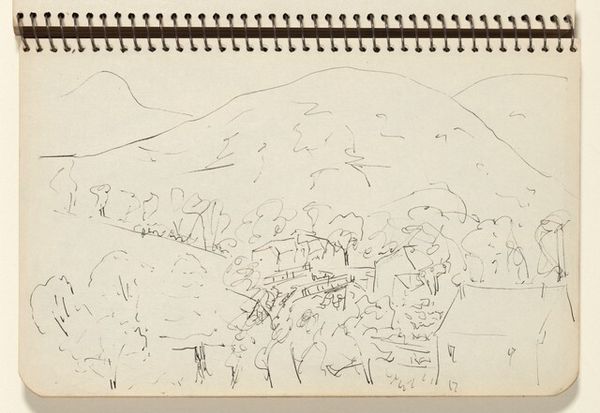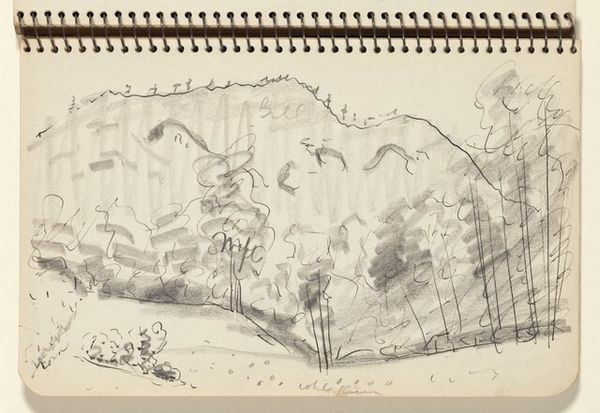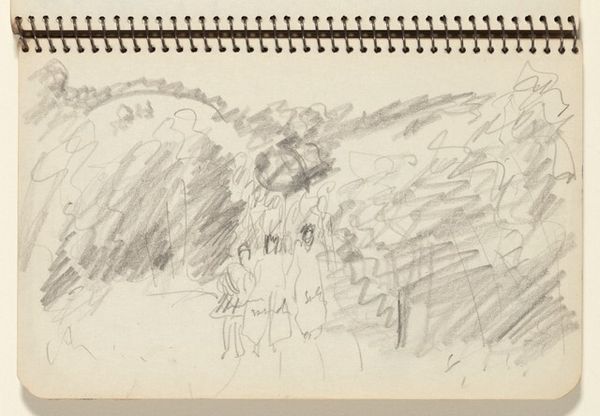
drawing, ink, pencil, pen
#
drawing
#
landscape
#
ink
#
pencil
#
pen
#
modernism
Dimensions: overall: 12.8 x 20 cm (5 1/16 x 7 7/8 in.)
Copyright: National Gallery of Art: CC0 1.0
Curator: Welcome. We’re standing before Milton Avery’s 1943 work, “Vermont Landscape,” created with pen, pencil, and ink on paper. Editor: My first impression is one of delicate restraint, a subtle balance. It has the immediacy of a quick sketch but also an arresting composure in its stark linearity. Curator: The modernist treatment of this drawing lies primarily in Avery’s simplification of forms. We can observe the gestural lines outlining the Vermont mountains and forests. It seems Avery sought to distill the landscape down to its essence. Editor: This was the year during World War II that race riots broke out in cities like Detroit and Beaumont—and the same year mass deportations of Mexican-Americans occurred, with many US citizens displaced across borders. There's a sense of starkness here, reflecting a society at war, grappling with social injustice. Did Avery, like so many other artists of his era, intentionally create an art which was quiet and contemplative amidst the raging tempests of world conflict? Curator: Your observation opens up rich historical angles, but perhaps we could also note how Avery guides the eye across the composition through rhythmic repetition? The clusters of lines create areas of light and shadow. The undulating mountaintops offer an additional feeling of perspective. Editor: The use of minimal strokes effectively conveys both distance and form. This simplicity emphasizes a powerful interconnectedness of all things—especially landscape with people; that each stroke has broader implications that extend beyond just art technique, which, during a historical moment like 1943 is extremely compelling. It could be argued the lines here suggest borders and separation as much as harmony. Curator: That's quite an interesting observation regarding historical interpretations, and an apt reminder that no artwork is viewed inside of a social vacuum. Ultimately, "Vermont Landscape" offers, regardless of specific context, a lesson in the power of line and form. Editor: It certainly underscores how art continually echoes the surrounding world while offering avenues for change. We must always remember that history itself is as interpretive as aesthetics; Avery here teaches both.
Comments
No comments
Be the first to comment and join the conversation on the ultimate creative platform.
